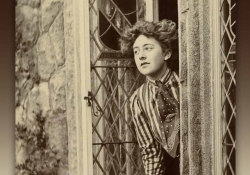Hygge

In her column Untranslatable, Veronica Esposito considers why various words are so difficult to translate. Here, she considers how hygge presents an interesting case because, unlike so many other loanwords, it is one that has tapped into the cultural zeitgeist, very much aided by the tumultuous politics of past years and world-changing events like the Covid pandemic.
Can a word remain “untranslatable” even when it has become so widely used in English that news websites declare it has “taken over America”? That’s what I’m trying to figure out when it comes to the Danish word hygge.
Hygge is one of many, many loanwords to the English language—words that were once considered foreign but are now so commonly used by English speakers as to be considered a part of the language. English actually has a lot of loanwords—so many, in fact, that many of us probably don’t even realize that words we use every day originated in other languages. According to researcher Uri Tadmor and Martin Haspelmath’s World Loanword Database, English is among the languages with the most loanwords. Words such as zeitgeist, sauna, brouhaha, amok, and apartheid are just a few of the many such words that came into English from other places—we now use them confidently and easily, and may not even be aware that once they were once indecipherable.
Hygge, which is native to both the Danish and Norwegian languages, is defined by the Collins English Dictionary as “a concept, originating in Denmark, of creating cozy and convivial atmospheres that promote well-being.” Hygge’s origin is unclear, although it is thought to have emerged in the sixteenth century from the word hugga, which means “to comfort,” and may even have roots in the word hug. According to Matt Pickles of Oxford University, the word took on its modern cultural connotations in Denmark in the nineteenth century: “In its more contemporary usage, hygge emerges in nineteenth-century Danish literature as part of a more integrated sense of community and belonging, especially following the Prussian-Danish wars in 1848 and 1864.” Merriam Webster dates the first use of the word in English to 1960.
Although hygge languished in relative obscurity in English for decades, all that changed in the 2010s: according to Google search data, hygge experienced an explosive surge of popularity during the winter of 2017. This arrival on the English-language scene has been largely attributed to the international bestseller The Little Book of Hygge, by Meik Wiking, which brought this little word worldwide attention. It also likely had to do with feelings of fear, alienation, and discomfort connected with troubling political developments in 2016—namely, the twin rise of Brexit and Donald Trump. Google searches for hygge have surged every winter since that first 2017 breakthrough, albeit never again quite reaching the levels of the January 2017 high. (As I write this in the dark days of January 2024, “how to hygge” is, according to Google data, a wildly popular search term.)
“How to hygge” is, according to Google data, a wildly popular search term.
So, without a doubt hygge has become promulgated throughout America, but does all this exposure necessarily equal understanding? There are certainly those that would argue not. For instance, the sudden fame of hygge was denounced by Danish writer Laura Byager in a 2018 article for Mashable somewhat aggressively titled “Your hygge-obsession is weird and misunderstood, please stop.” She argued that the word has been “practically weaponised in recent years in an effort to sell candles, socks, and blankets.” She went on to claim that “hygge was never a lifestyle, but it’s certainly marketed as one . . . by people wishing to cash in on the Scandi-zeitgeist.” Through the article, Byager complained that hygge, among other things, has led to Scandinavians believing that their culture is being fetishized and turned into a mass consumerist product.
Hygge presents an interesting case because, unlike so many other loanwords, it is one that has tapped into the cultural zeitgeist, very much aided by the tumultuous politics of past years and world-changing events like the Covid pandemic. This makes hygge very different from other words that I have profiled in this column, as it has been subject to much larger versions of the forces that tug and shape and twist at any word as it transits between languages. Hygge has been given a platform—or maybe it’s been put onto a pedestal. Either way, those like Byager would argue that the popularized version of the word has been dragged from its true meaning. It’s worth noting that the argument of Byager and others who have taken up her cause is not mainly a linguistic argument but an economic one—it is, in the words of Meik Wiking, a concern that hygge is “being hijacked by commercial interests.” All words are subject to the influence of the marketplace, to be sure, but hygge seems to be a particular example of this.
Interestingly, Wiking doesn’t seem to believe in the notion of the untranslatable, at least when it comes to hygge, as he states that “Denmark does not have a monopoly on hygge. It happens everywhere.” Byager also agrees that we all feel hygge.
While hygge may happen all around the world, many have tried to explain just what the word means to the Danes and the Norwegians. Writing in the New Yorker, Anna Altman brought out many of the main ideas that tend to cluster around hygge, arguing that the sense of hygge reaches its fullest expression when in the community of others, and that it is often linked to the well-known claim that the Scandinavians are among the happiest people in the world.
In a scholarly article, “Money Can’t Buy Me Hygge,” anthropologist Jeppe Trolle Linnet delved into the deeper cultural roots of the word. After suggesting that hygge is a “mode of withdrawal from alienating conditions of modernity,” Linnet pointed to several aspects of Scandinavian society that promote a community spirit that makes hygge more evident and powerful. Among these points are embedding the term in evaluations of family relationships, social norms in Scandinavian societies that promote egalitarianism and consensus-seeking, and even a bent toward introversion. “While the emotional valence of hygge,” Linnet concludes,
is not necessarily qualitatively different from the American experience of hominess, it is intensified—not all the time or for everyone, but as a cultural emphasis. . . . Hygge is a phenomenon that has an immediate presence in everyday awareness. People are able to elevate this notion into an icon of the nation because the country’s history lends itself to being represented by it. Hygge therefore becomes a cultural reference point that all Danes relate to, even if they disagree about its attractiveness and legitimacy.
One might reasonably wonder why if, as Linnet suggests, Americans already have our own approximation of hygge—namely, hominess—we have rallied so much around the foreign term. This perhaps points to something else that translation can do for us: it can make a well-worn concept feel new. Perhaps Americans numbed by the belligerence and cruelty of Donald Trump and exhausted by the Covid pandemic didn’t want to be told to create a sense of hominess—perhaps we wanted an answer that felt new and different. And maybe that is why we became attached to this term that sounded so new and alluring.
Perhaps Americans numbed by the belligerence and cruelty of Donald Trump and exhausted by the Covid pandemic didn’t want to be told to create a sense of hominess—perhaps we wanted an answer that felt new and different.
Translation has long been known as a means of rejuvenating a language—in this case, maybe it also rejuvenated our spirit.
Oakland, California
















